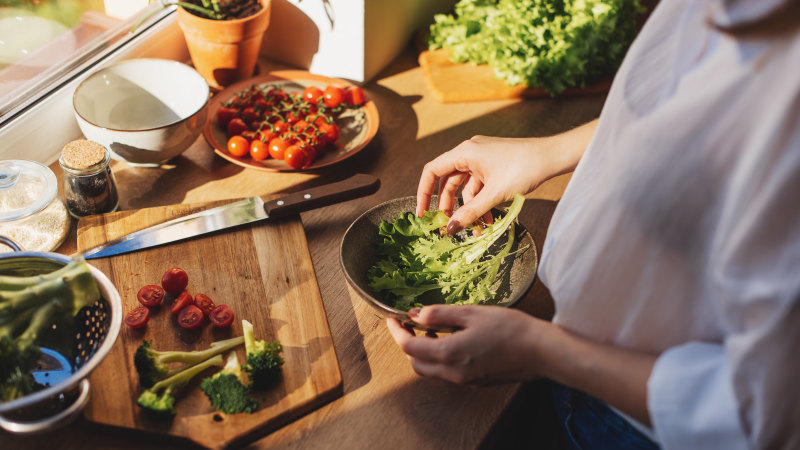[ad_1]

Researchers aren’t entirely sure why this might be. One theory is that eating fats, fibre and proteins first delays stomach emptying, which could slow the absorption of sugars from the carbohydrates into the bloodstream, Shukla says.
Barbara Eichorst, vice president of health care programs at the American Diabetes Association, says it makes sense for people with type 2 diabetes or pre-diabetes to consume vegetables and proteins first during meals, since, unlike carbohydrates, vegetables and proteins don’t rapidly turn into sugar and cause high blood glucose spikes.
For those who have type 2 diabetes, some limited research even suggests that this blood sugar lowering effect could be comparable with certain diabetes medications, says Nicola Guess, a clinical dietitian and researcher at the University of Oxford in Britain. However, more research is needed on the topic.
Should everyone eat like this?
Research has also shown that eating carbohydrates last in a meal can reduce blood sugar spikes in people who don’t have diabetesbut experts say that healthy people usually don’t need to micromanage their blood sugar in this way.
A properly functioning body will bring blood sugar levels back down to normal within hours after eating a meal, says Dr Vijaya Surampudi, an endocrinologist at UCLA Health.
Nonetheless, since proteins, fats and fibre-rich vegetables take longer to digest than simple carbohydrates, saving carbs for last can help people feel fuller for longer, says Dr Domenico Tricò, an assistant professor of internal medicine at the University of Pisa in Italy who studies food order.
Loading
Research also suggests that eating this way can stimulate the gut to produce more of a satiety hormone called glucagon-like peptide 1, or GLP-1. (The diabetes drug Ozempic is designed to mimic this hormone.)
“GLP-1 slows digestion and tells your brain you’re not hungry,” Surampudi says. But some experts say it’s not clear if the small increases in this hormone from meal sequencing alone (compared with the large increase you’d get from a drug like Ozempic) would make a big difference in how sated you feel.
If you tend to feel sluggish after meals, front-loading them with vegetables or protein could help, Shukla and Surampudi say.
Some research also suggests that saving carbohydrates for the end of a meal can make you more likely to fill up on vegetables and protein and eat fewer simple carbohydrates, which tend to have fewer nutrients and more calories, Shukla says.
The bottom line, the experts say, is that while meal sequencing is one of many healthy eating strategies, it’s not something to stress about. Dietary trends like these sometimes result in making people anxious, which can lead to disordered eating.
“If it’s easy for you, then you should go for it,” Tricò says. But if not, just aim for high-quality food you enjoy. Loading up on vegetables at every meal is more important than focusing too intently on the order of your food, Guess says.
The New York Times
Make the most of your health, relationships, fitness and nutrition with our Live Well newsletter. Get it in your inbox every Monday.
[ad_2]
Source link